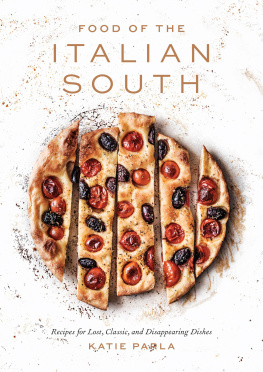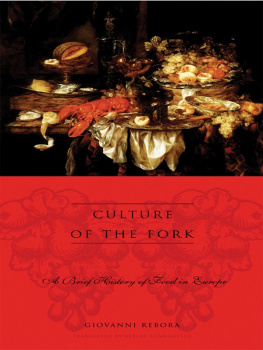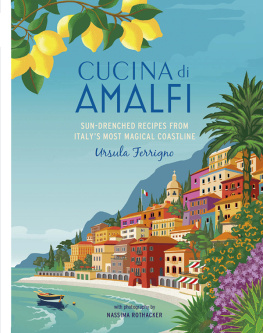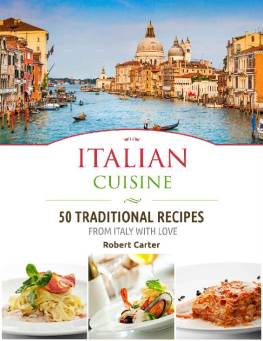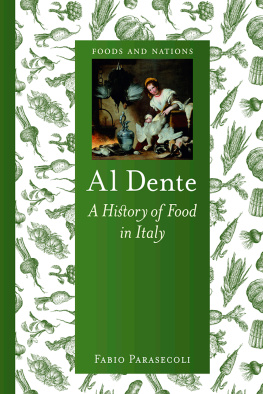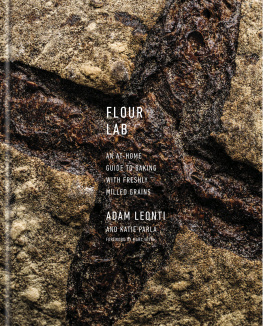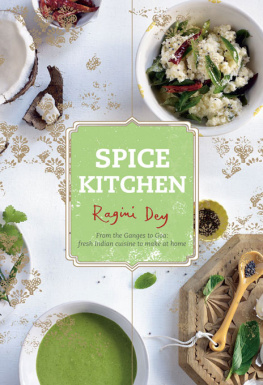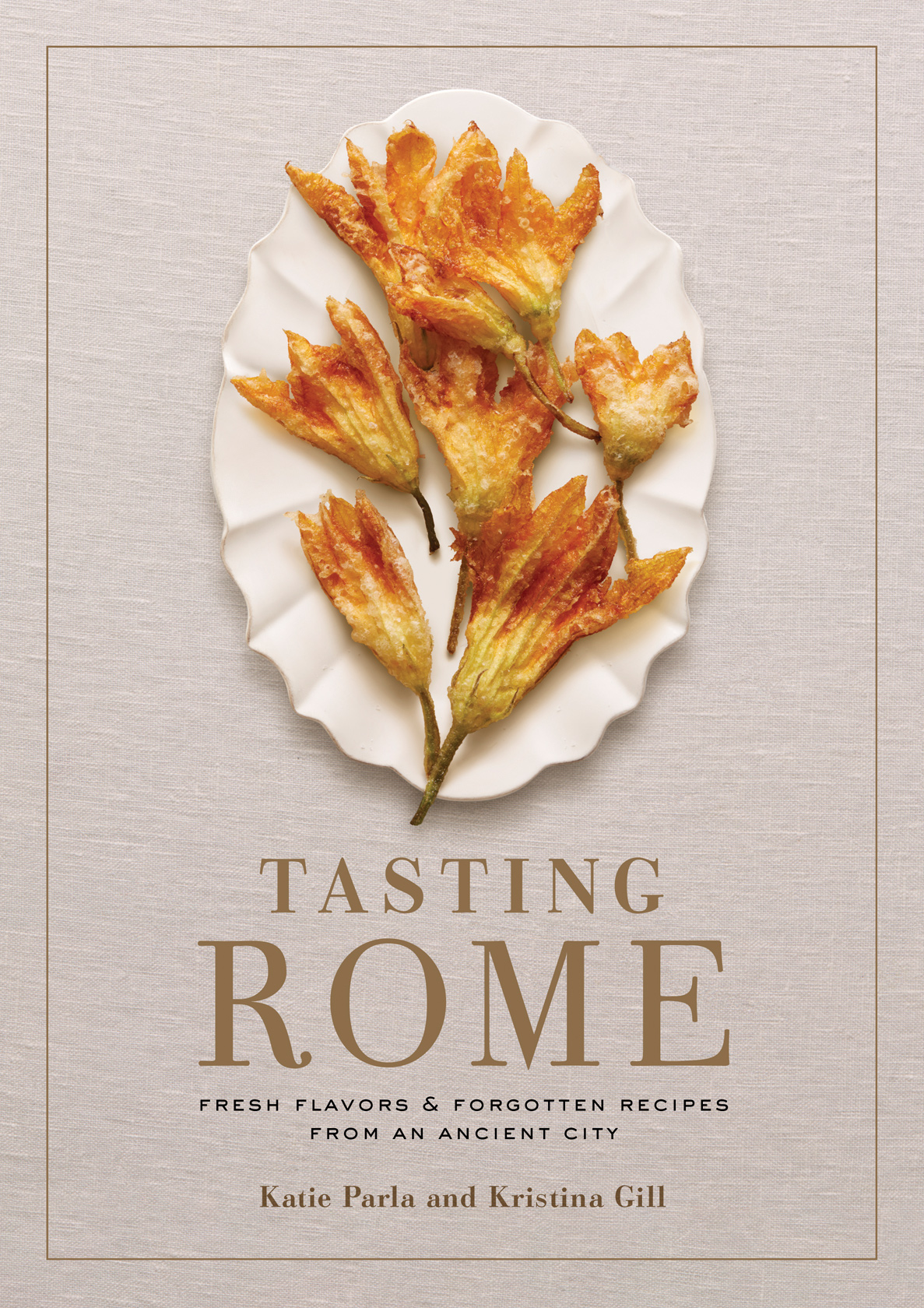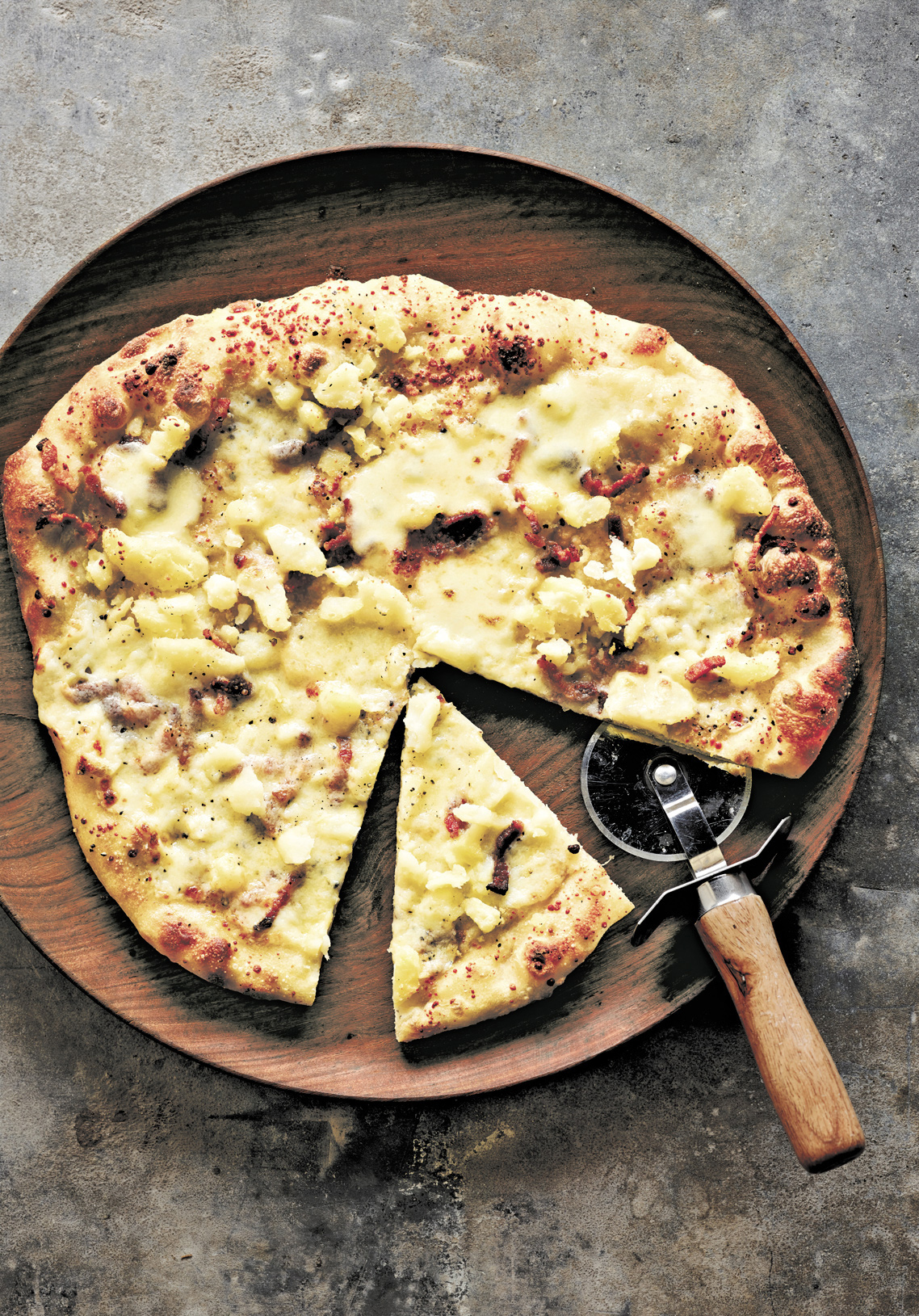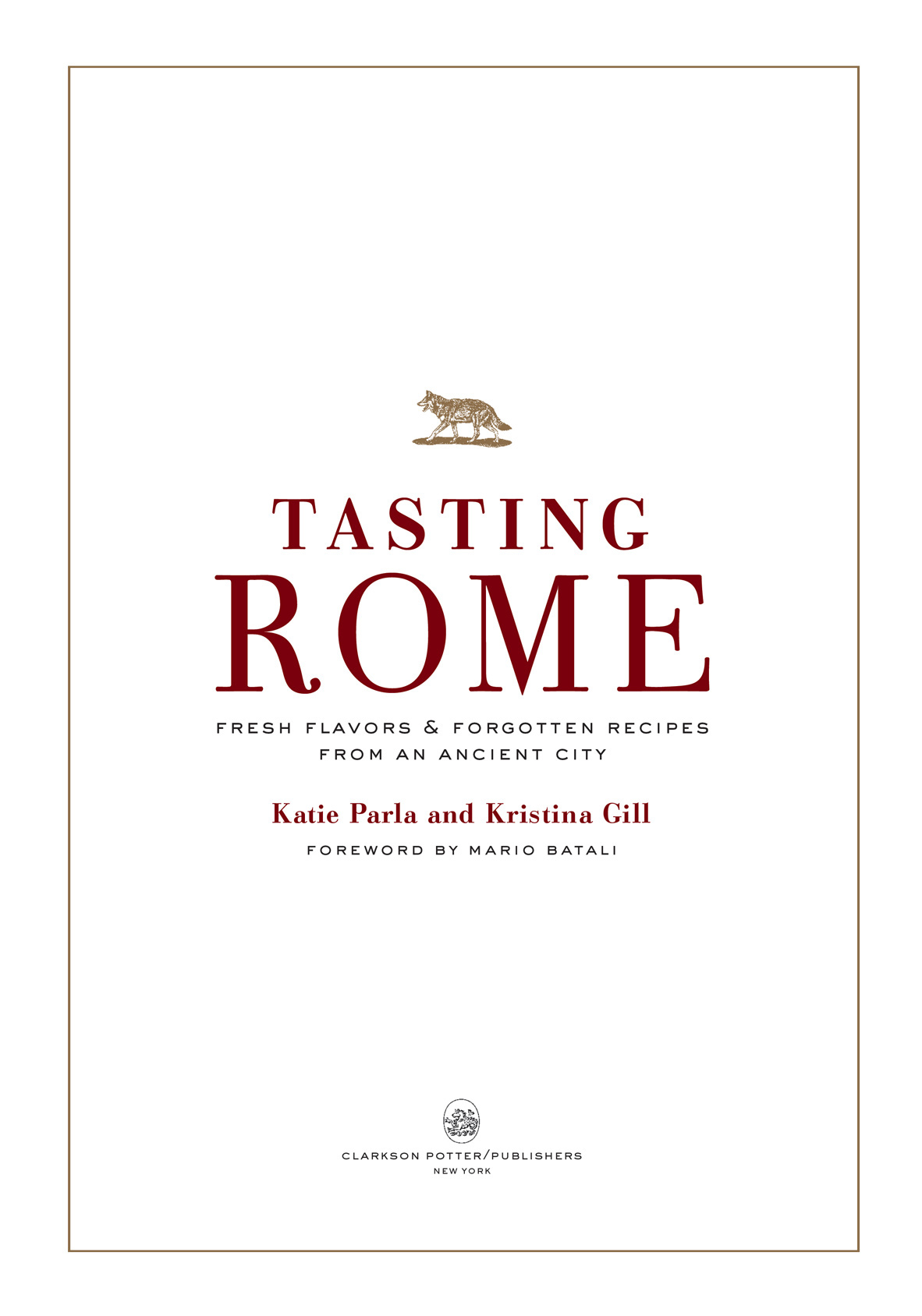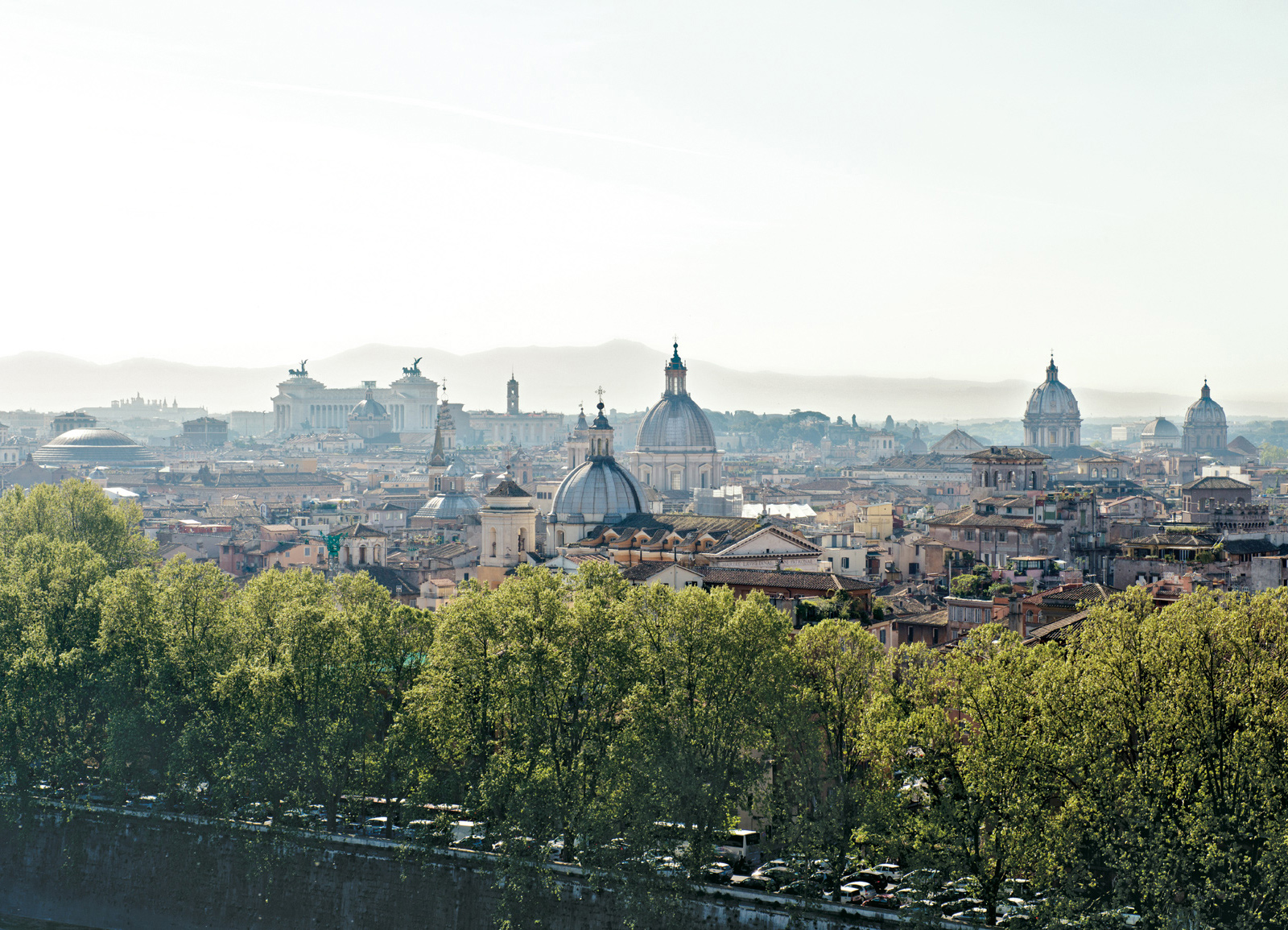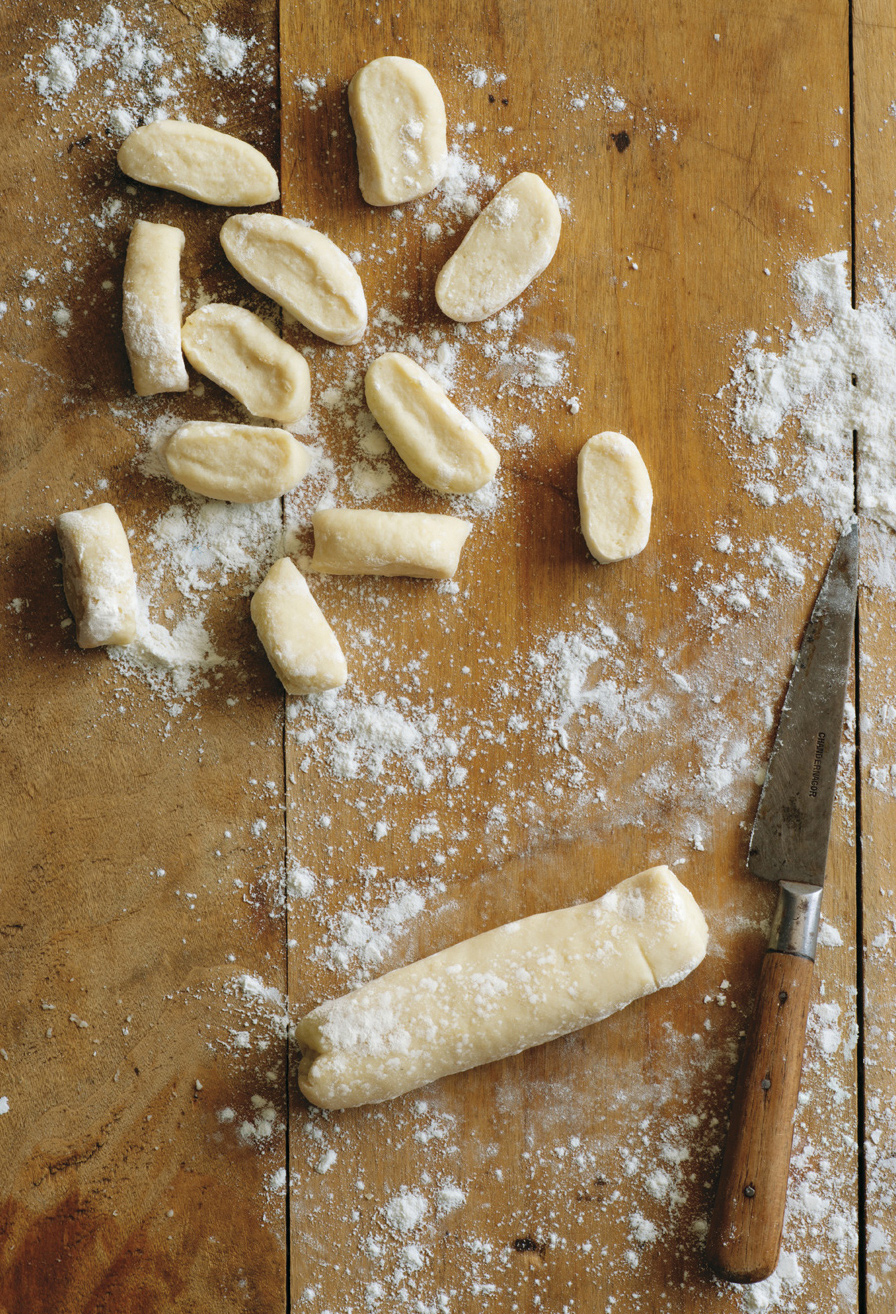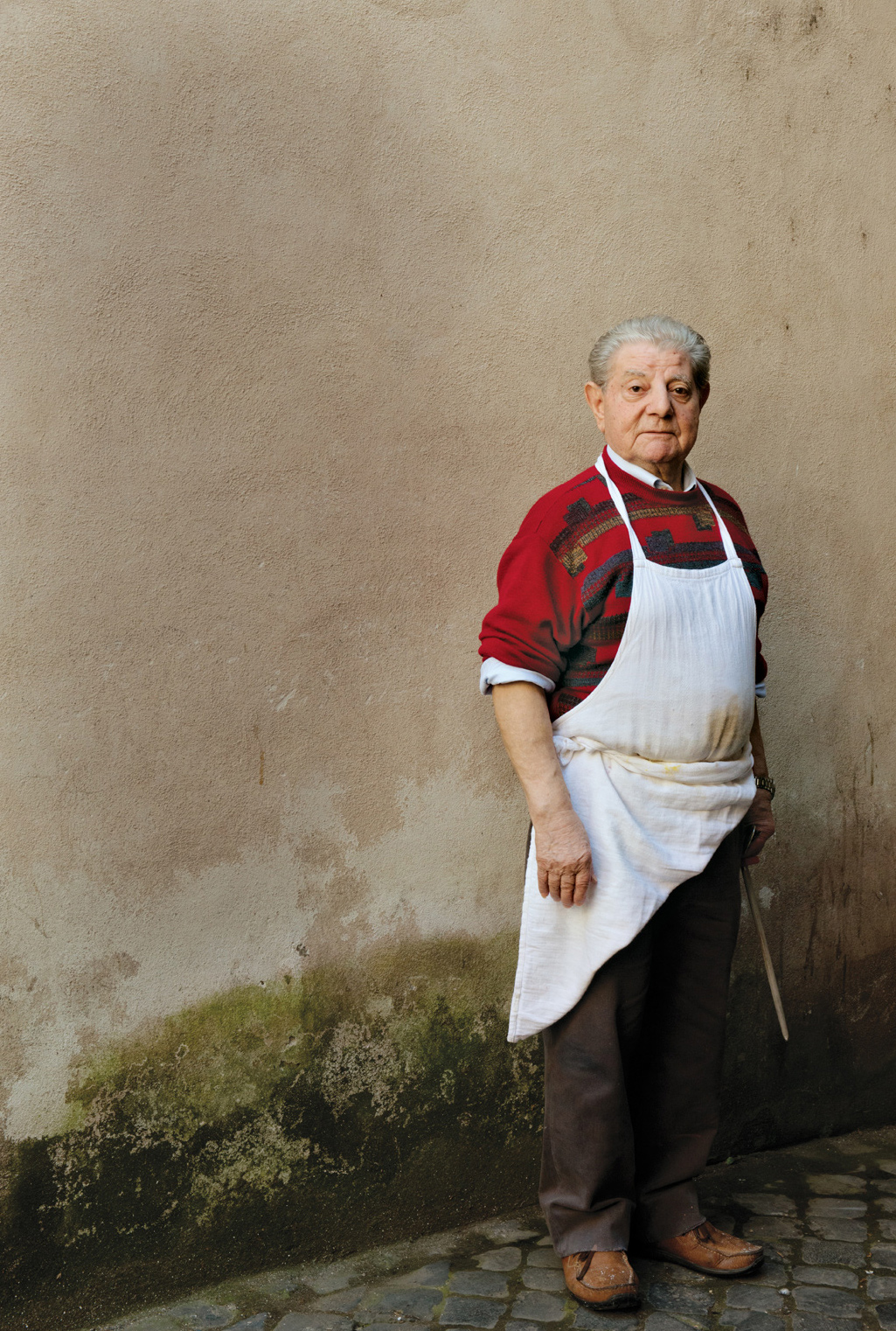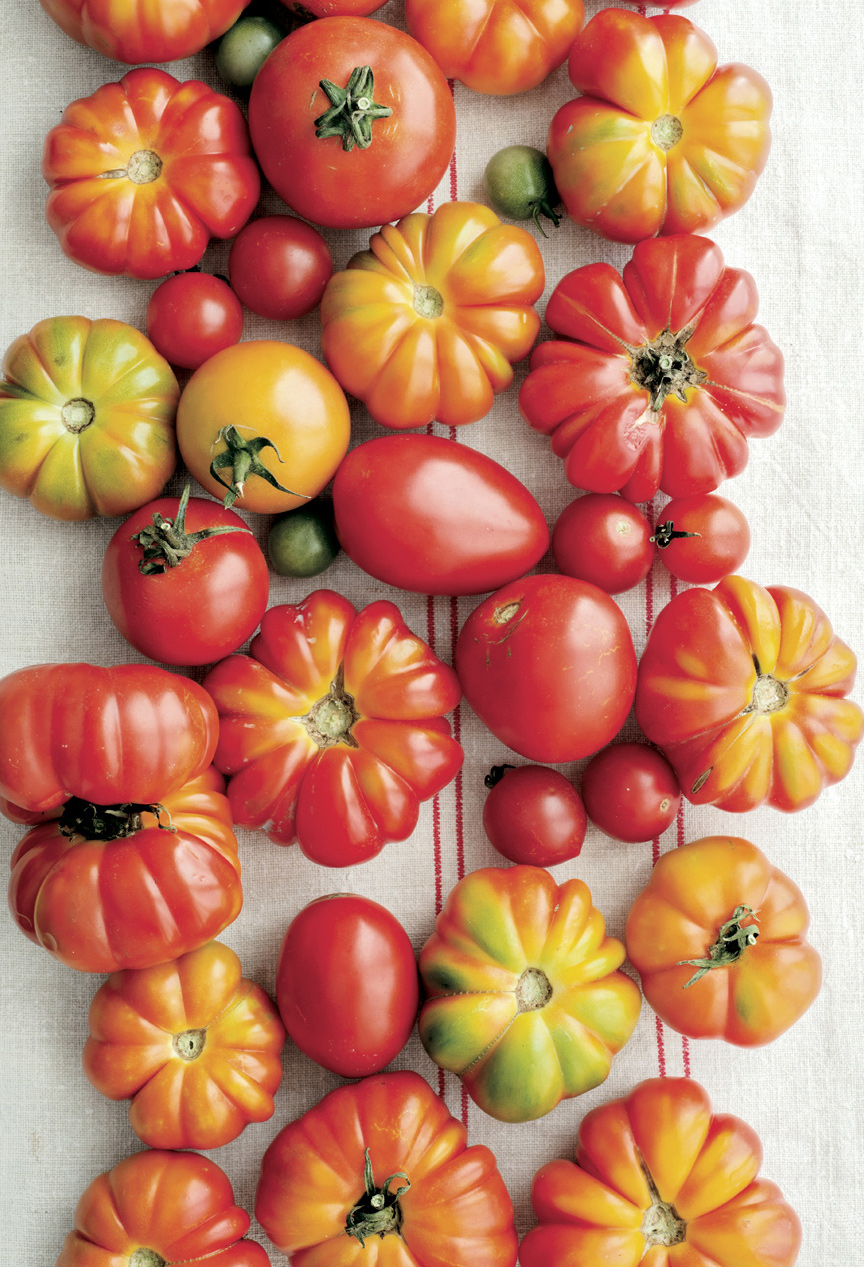Contents
Copyright 2016 by Katie Parla and Kristina Gill
Photographs copyright 2016 by Kristina Gill
All rights reserved.
Published in the United States by Clarkson Potter/Publishers, an imprint of the Crown Publishing Group,
a division of Penguin Random House LLC, New York.
www.crownpublishing.com
www.clarksonpotter.com
CLARKSON POTTER is a trademark and POTTER with colophon is a registered trademark of Penguin Random House LLC.
Library of Congress Cataloging-in-Publication Data
Parla, Katie.
Tasting Rome : fresh flavors and forgotten recipes from an ancient city / Katie Parla and Kristina GillFirst edition.
pages cm
Includes bibliographical references and index.
1. Cooking, Italian. 2. CookingItalyRome. I. Gill, Kristina. II. Title.
TX723.P344 2016
641.5937dc23 2015023715
ISBN9780804187183
eBook ISBN9780804187190
Cover design by Stephanie Huntwork
Cover photographs by Kristina Gill
Title page illustration (wolf) by Meighan Cavanaugh
Photographs on by Matt Armendariz
v4.1_r2
a
For Mamma Parla, Papa Parla,
Lauren Parla, Nonno Cipollina, and Chris Behr
KATIE PARLA
For my father, my biggest fan
KRISTINA GILL
CONTENTS
FOREWORD
It wasnt long after my arrival in Borgo Capanne, a village between Bologna and Florence, that the nuances of regional cuisines came into sharp focus. It was 1989 and I had come to work in a tiny little restaurant that had twenty-four seats. Of course, before I even landed I knew that each of Italys regions, cities, and villages celebrated and dutifully reproduced their unique cuisines, but it wasnt until I had fully immersed myself in that kitchen that I discovered how cooks could be totally devoted to the same local flavors and ingredients and yet make them all their own.
Traditional recipes dont just change from region to region; they also vary from cook to cook. The basic components of a dish like tagliatelle al rag may be sacred, but their proportions and handling are at the discretion of individual cooks, who infuse their dishes with personal flair. By the time my three years in central Italy had passed, I had tasted hundreds of tagliatelle al rag dishes, each one built from similar elements, but slightly differenteach dish a mirror of its maker. The same with lasagna al forno , the same with tortellini in brodo , the same with cotoletta alla bolognese .
Down in Rome, this revelation is reinforced with each plate of carbonara, cacio e pepe , and coda alla vaccinara , and I am constantly curious about how a cook arrives at his or her personal recipe. Why does one use pancetta instead of guanciale in carbonara or introduce Parmigiano Reggiano into the cacio mix? What drives half of Romes chefs to use cocoa powder in their coda and others to leave it out? Tasting Rome answers these questions. Katie Parla, my dear friend and expert on all things Romeparticularly food, wine, and beerhas distilled the local culture as only the most informed and devoted observer could and shows how traditions are ever evolving. And while the book contains many of the recipes you might expect to find in a Roman tome, Katie and Kristina deliver them with new techniques and insider knowledge, thanks in part to the generous collaboration of the citys chefs and bakers. Rome jumps off the page thanks to Kristina Gills insightful images. This book is indispensable for both the casual reader and the imminent traveler, and even just for the interested culinarian reading out of love.
MARIO BATALI


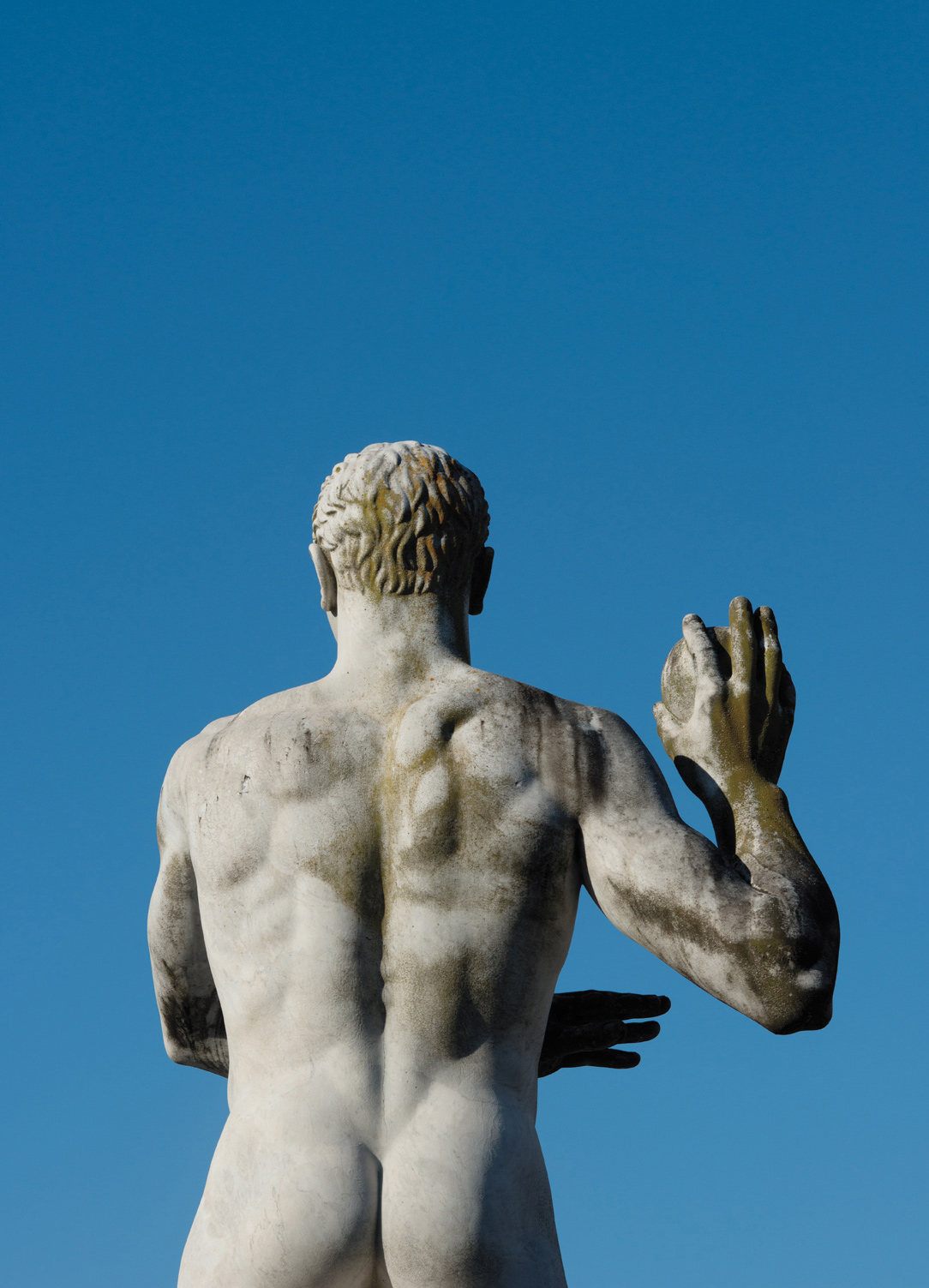

INTRODUCTION
Theres a huge field in the center of Rome. It used to be a stadium called the Circus Maximus and chariots raced around its half-mile circumference in front of a quarter million fans. Now its a sort of dusty, neglected dog park. It hosts the occasional jogger. Kids cutting class recline on the slopes where the bleachers used to be. Sometimes tourists picnic in the shade of the umbrella pines planted at the end of the field beside a converted pasta factory where the citys Opera builds and stores its sets.
Its spots like this one that make us love Rome. The cobblestoned streets, baroque fountains, pastel palaces, and lively piazzas have obvious appeal. Theyre easy to love, but were more drawn to the citys surreal bits like the pasta-factory-turned-opera-warehouse next to a giant ruin. Rome is full of similar contrasts, places where contemporary life proceeds normally in spite of extraordinary or sometimes bizarre settings.
So how did two Americans end up in this strangely beautiful and beguiling ancient city? Our roads to the Italian capital were a bit different. Katie, a New Jersey native, came in 2003 as a recent college graduate with an art history degree. She planned to continue studying art but was immediately distracted by the local cuisine; she turned her attention to food instead and earned a masters degree in Italian gastronomic culture at the Universit degli Studi di Roma Tor Vergata. Kristina was transferred to Rome in 1999 for work, after having studied for a year in Florence as an undergraduate and a year in Bologna as a graduate student. Neither of us ever left. Katie now works as a freelance food and beverage journalist, culinary guide, and lecturer, while Kristina is the food and drinks editor at Design*Sponge, a freelance photographer, and a development adviser focused on food assistance. We may have arrived here with other plans, but Romes food and drinks won us over for good.


